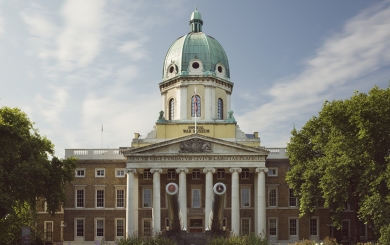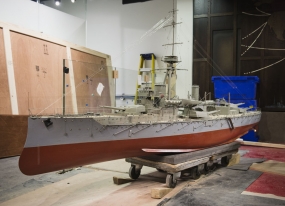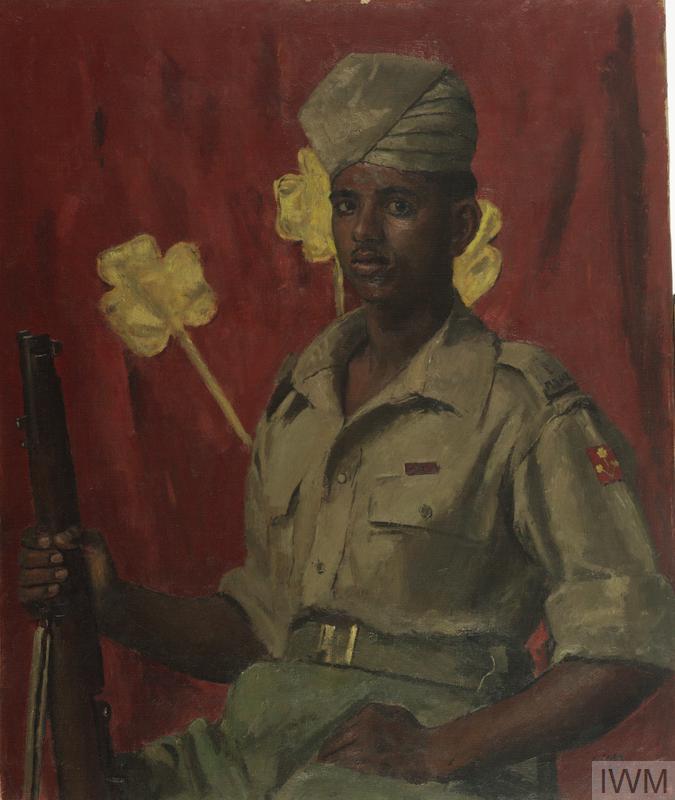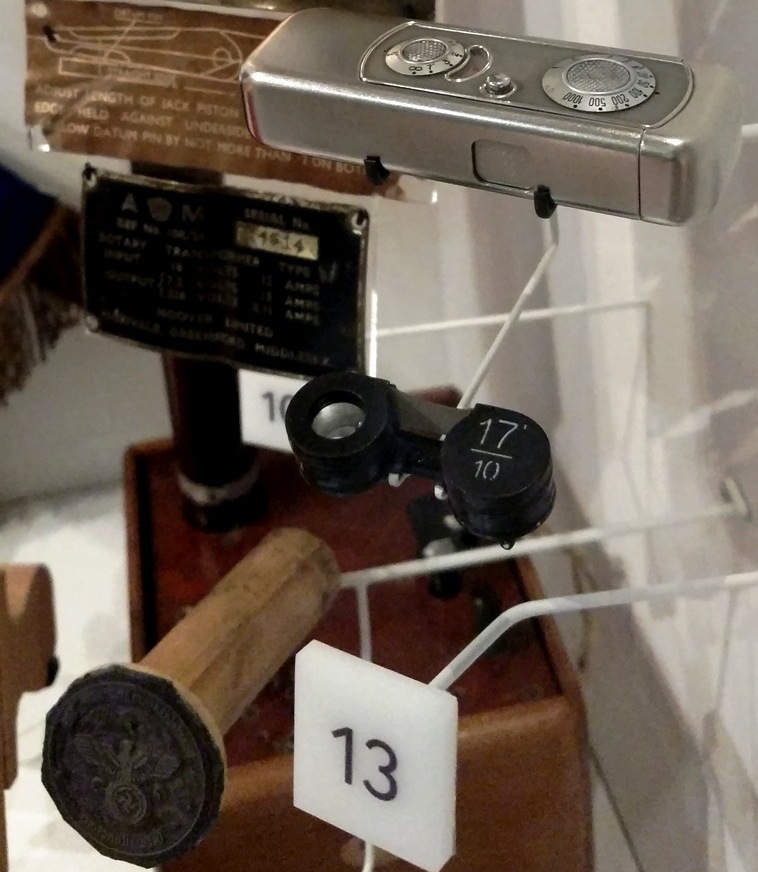Difference between revisions of "Imperial War Museum"
From Londonhua WIKI
(→Before the War) |
(→Why War?) |
||
| Line 85: | Line 85: | ||
*Will Britain intervene? Some Britons did not want to join the fight. The British government, led by Prime Minister Herbert Asquith, agonised over whether to support Russia and France. But it feared German domination of Europe A victorious and hostile Germany would threaten Britain's security and its position in the world. | *Will Britain intervene? Some Britons did not want to join the fight. The British government, led by Prime Minister Herbert Asquith, agonised over whether to support Russia and France. But it feared German domination of Europe A victorious and hostile Germany would threaten Britain's security and its position in the world. | ||
*Britain declares war. Germany's invasion of Belgium, to get to France, tipped the balance. Britain had long promised to protect Belgium's right to be neutral On 4 August 1914. Britain with its global empire declared war on Germany. | *Britain declares war. Germany's invasion of Belgium, to get to France, tipped the balance. Britain had long promised to protect Belgium's right to be neutral On 4 August 1914. Britain with its global empire declared war on Germany. | ||
| + | ===War Time=== | ||
| + | Seven million men marched off to war in August 1914. A million of them lay dead by the end of the year. Mainland Europe became a battleground. Both sides wanted to crush their enemies and end the war quickly. n the west, British, French and troops Belgium fought the German invaders. In the east, Germany and Austria-Hungary clashed with Russia and Serbia Neither side achieved a decisive victory The horrific number of casualties caused by modern weapons came as a terrible War crimes against civilians made the horror The British Expeditionary Force (BEF), the core of Britain's small army, was almost destroyed. | ||
| + | In 1914 all armies hoped for a swift victory. On the Western Front, Germany planned to defeat France quickly. It would then strike at Russia. The Germans won a series of bloody clashes driven back at the Marne. Yet they still occupied nearly all of Belgium and much of northern France. On the Eastern Front, Russia captured much Austro-Hungarian territory, but its invasion of Germany was a disaster. Austria-Hungary failed miserably in fighting Serbia and Russia Why was there no quick victory in 1914? Modern weapons enormous numbers of casualties. Endless marching and fighting exhausted men and horses. Generals lacked the communications equipment to control huge armies. On both fronts, the war ground to a halt. | ||
| + | |||
| + | By late 1914 the war on the Western Front had become deadlocked Neither side had achieved victory in northern France and Belgium. They now dug trenches to protect themselves from each other's murderous fire. Soon, vast trench networks snaked from the English Channel to Switzerland. The German Army had to defend the rich industrial regions it had seized. Trenches were easier to defend than attack, so the Germans hoped to wear down their enemies by sitting tight. The British and French had to drive the Germans out. They searched desperately for new weapons and new ideas to do just that. | ||
=Second World War Galleries= | =Second World War Galleries= | ||
Revision as of 09:53, 23 May 2017
Imperial War Museum
 Representative Article Image | |
| Imperial War Museum | |
|---|---|
| Attributed to Imperial War Museum | |
| Year | c. 1917 |
| Dimensions | 55.2 cm × 43.8 cm ( 21 3⁄4 in × 17 1⁄4 in) |
| Location | Imperial War Museum, London |
Overview
The Imperial War Museums is series of 5 museums located throughout England which holds a large collection of public and private documents, photographs, videos, and film material, and oral history recordings, an extensive library, a large art collection, and examples of military vehicles and aircraft, equipment, and other artifacts.The London location has a focuses on people's experiences and stories from WWI to current day modern day. It has several permanent exhibits such as the World War I exhibit which focuses on the sacrifices that many countries made while fighting the war, the Holocaust Exhibition, and the Secret War Exhibition.
Contents
Secret War
Secret War is an exhibit revealing the covert operations departments in Britain. These five departments are MI5, MI6, Secret Communications, SOE, and Secret Soldiers, each with their own specialty. Together, they provide critical intelligence to Britain to protect the country and its assets and act on this intelligence.
MI5
Military Intelligence 5 (MI5) or otherwise known as the Security Service protects Britain against espionage, terrorism or other forms of sabotage within the country. While MI5 was established in 1909 it was not until 1989 that its role was formally defined in the Security Service Act. Britain was one of the few European powers going into the twentieth century without a secret service. However, fear of Germany took over and the War Office's Secret Service Bureau was formed. MI5 came from the "home" department of this bureau. Despite being new and small, the department apprehended 12 German spies by the start of World War I. During the war the department was designated as MI5, acquired 21 agents and grew greatly in size. After the war focus shifted to Irish Nationalism, the threat of communism and right wing extremism. MI5 helped carry out surveillance on fascist and communist organizations that were acting as a front for Nazi and Soviet espionage. During World War II they went on the offensive due to the German threat. Sixteen enemy spies were executed and forty-seven others were "turned" into double agents as part of "The Double Cross System". MI5 also collaborated with MI6 and foreign secret services to defend allies against espionage and create a network of double agents. During the Cold War, MI5 worked hard to defend the country against Soviet spies and British citizens under their control. Starting in the 1970s concern over terrorism grew and MI5 expanded to fight that as well.
MI6
Military Intelligence 6 (MI6), the Secret Intelligence Service, was created in 1909 and formally defined in 1994 in the Intelligence Services Act. Its purpose is to collect intelligence on foreign activity and act on it. MI6 was formed from the other department of the War Office's Secret Service Bureau, the foreign department. Going into World War I the objective was to gain information on German naval construction as well as any plans to invade Britain. During the war the department was designated as MI6. Their purpose was to establish networks of information and to thwart the efforts of Germans in neutral countries. The most successful intelligence network was "La Dame Blanche" consisting of almost 1000 informants. After the war the focus was on monitoring the Soviet Union and fighting the spread of communism. As World War II approached, aerial photographic reconnaissance became important. At the start of the war, MI6 suffered due to a shortage of staff and funds, the kidnapping of two senior officers and the robbery of its communications system by the Germans. They recovered quickly, however, thanks to valuable signals intelligence, an influx of funds and foreign dissidents forming information networks. Post-war, MI6 worked to destabilize the Soviet Union and turn members of the Warsaw Pact. Since the end of the Cold War their goals have changed but the purpose remains to collect intelligence on foreign threats.
Secret Communications
SOE
Secret Soldeirs
First World War Galleries
These galleries are about the First World War The 'Great War', as people called it at the time, lasted for over four years and cost millions of lives. In Britain everyone was affected by the Great War, whether they were fighting or on the home front. In these galleries men, women and children who experienced the war will tell you their stories.
The first thing you see when you go into the Gallery is 3 models of ships. Britain relied on ships such as in food and raw materials and to export its goods. Almost half of the world's merchant shipping was British. For example the ss Nonsuch was a merchant ship. Another model ship was the SS Gloucester Castle, a mail ship. Ships such as this enabled families and businesses to keep in touch across vast distances. As well as carrying post, mail ships carried passengers emigrating from Britain to new lives in the Empire and the United States. But the most important and largest ship was the HMS Hercules.
 The restored HMS Hercules model, shortly before its installation in the First World War Galleries. | |
| Attributed to Imperial War Museum | |
| Location | Imperial War Museum, London |
|---|---|
This model she had been displayed in the Imperial War Museum's Naval Gallery since 1936 but on Friday 31st January 1941 a huge incident happened. A group of workmen in the museum were repairing blast damage from earlier air raids, around midday they stopped for lunch and shortly afterwards a German bomber dropped five bombs in the locality. Had the bombs fallen a few minutes earlier the workmen would have all been killed. However, the Imperial War Museum's Naval Gallery was destroyed. Six showcases of ship's badges had their contents blasted cleaned out of the building being thrown off to the park and events the museum's roof. The bomb blast shattered the Hercules model glass showcase and "turned the ship's masts and other fittings into a mass of tangled wreckage".[1] In 2010, work started to slowly restore the Hercules model so that it could go on display in the museum once again.It is now available for visitors from all around the world to admire in the First World War Galleries of the Imperial War Museum London.
Like many ships of the Grand Fleet, Hercules drew its name from classical mythology. In the Greek myths, Herakles, known to the Romans as Hercules, was a hero of legendary strength who overpowered and outwitted his enemies. Some ships' names, like Hercules, evoked legendary figures known for their combat prowess or martial qualities. Examples include the battleships Bellerophon and Orion, the slayer of monsters and the huntsman respectively, or the light cruiser Bellona, the Roman goddess of war. Others ships took names that suggested perhaps surprising qualities for warships – the light cruisers Comus and Calliope remembered in their names the drunken god of wild partying, and the goddess muse of poetry and eloquence.[2]
Before the War
"England and the Empire were never greater than they are to-day"The Times New Year's Day 1914.
Most Britons were proud of their empire, the greatest the world had ever seen. Every fourth person on Earth owed allegiance to the British Crown. Many had emigrated from Britain, while millions more, notably in India, lived in lands conquered by the British.
Did all Britons feel pride in the Empire?
Most Britons believed that Britain's empire was a force for good. British emigrants who had sailed for new lives in Australia, Canada, New Zealand and South Africa felt pride in both their adopted homelands and the mother country. Yet doubts about the future of the British Empire were growing People living in Britain's overseas possessions increasingly demanded greater freedoms their own affairs. Britain's worldwide empire also aroused the envy of its European neighbours.
Britain was the maritime nation. "Grown by the sea and live by it; if we lose command ofit we starve."- The Riddle of the Sands' 1903. Britain was a hugely wealthy country. The sea was Britain's lifeblood. British merchant ships, guarded by the Royal Navy, traded goods across the globe. British industry generated great riches. London was the financial centre of the world. Did all British people benefit from such wealth? Only the ruling classes really benefited. Millions lived in poverty. Discontent was growing. Industrial workers downed tools in strikes over poor conditions and low pay. Barely two-thirds of men and no women had the right to vote. Suffragettes waged a sometimes violent campaign to change this. British politics was divided over Home Rule for Ireland, war. which was on the verge of civil By 1914 the United Kingdom looked increasingly disunited.
There are always clouds in the international sky. For decades Britain had existed peacefully, if not always harmoniously, with its European neighbours. But from beginning twentieth century. Germany's aggressive attempts to compete as a world power worried Britain, France and Russia. Was Europe sliding towards war? Between 1900 and 1914 several diplomatic crises were triggered by the growing fear and distrust feet by Europe s statesmen. Huge sums of money were spent on armies and navies. By 1907 Europe had split into two main camps: Austria-Hungary Germany, and Italy joined together in and France, Russia and Britain the other. Yet until in the summer of 1914. there seemed no immediate reason for war.
Why War?
- Distant crisis On 28 June 1914 a Serbian-backed terrorist shot dead Archduke Franz Ferdinand, the heir to the Austro-Hungarian throne.
- War in south-east Europe Austria-Hungary, encouraged by Germany, set out to It war.
- Crisis rapidly spreads. This immediate crisis stirred old tensions and anxieties drawing in allies and supporters on both sides.
- A divided continent Leaders were willing to risk war to defend or extend their own national interests. Germany was determined to support Russia decided to stand reliable up for the Serbs. *Powers prepare Within weeks.Europe's leaders had prepared their armies and navies for war. Europe at war Germany believed it could gain an advantage by striking first. It declared war on Russia and then on Russia's ally in the west, France.
- Will Britain intervene? Some Britons did not want to join the fight. The British government, led by Prime Minister Herbert Asquith, agonised over whether to support Russia and France. But it feared German domination of Europe A victorious and hostile Germany would threaten Britain's security and its position in the world.
- Britain declares war. Germany's invasion of Belgium, to get to France, tipped the balance. Britain had long promised to protect Belgium's right to be neutral On 4 August 1914. Britain with its global empire declared war on Germany.
War Time
Seven million men marched off to war in August 1914. A million of them lay dead by the end of the year. Mainland Europe became a battleground. Both sides wanted to crush their enemies and end the war quickly. n the west, British, French and troops Belgium fought the German invaders. In the east, Germany and Austria-Hungary clashed with Russia and Serbia Neither side achieved a decisive victory The horrific number of casualties caused by modern weapons came as a terrible War crimes against civilians made the horror The British Expeditionary Force (BEF), the core of Britain's small army, was almost destroyed. In 1914 all armies hoped for a swift victory. On the Western Front, Germany planned to defeat France quickly. It would then strike at Russia. The Germans won a series of bloody clashes driven back at the Marne. Yet they still occupied nearly all of Belgium and much of northern France. On the Eastern Front, Russia captured much Austro-Hungarian territory, but its invasion of Germany was a disaster. Austria-Hungary failed miserably in fighting Serbia and Russia Why was there no quick victory in 1914? Modern weapons enormous numbers of casualties. Endless marching and fighting exhausted men and horses. Generals lacked the communications equipment to control huge armies. On both fronts, the war ground to a halt.
By late 1914 the war on the Western Front had become deadlocked Neither side had achieved victory in northern France and Belgium. They now dug trenches to protect themselves from each other's murderous fire. Soon, vast trench networks snaked from the English Channel to Switzerland. The German Army had to defend the rich industrial regions it had seized. Trenches were easier to defend than attack, so the Germans hoped to wear down their enemies by sitting tight. The British and French had to drive the Germans out. They searched desperately for new weapons and new ideas to do just that.
Second World War Galleries
V-2 Rocket
The V-2 Rocket was invented by Germany during the second World War. It is the first long range ballistic missile ever invented. It is the first ship to ever capture footage from space. It was invented by Wernher von Braun who later invented the Saturn V rocket for the United States. (pics will come)
The Holocaust Exhibition
This exhibition goes from the year 1933 to the year 1945 focuses on the Nazi regime and their persecution of Jews in Europe. It examines how and why Hitler rose to power and how it ultimately affected the population of Europe forever. This exhibit has photographs, diaries, clothing, toys, and films of people who experienced this tragedy. The exhibit and the personal accounts of survivors are a painful reminder of the tragedy of war and how it had devastated the lives of many.
Family in Wartime
This exhibit focuses on how family life was affected primarily during World War II. One of the main focuses of the exhibit is to give visitors a better understanding of how daily life in Britain changed during the war. Things such as air raids, rations, and preparedness plans were all part of life especially in London itself. The exhibit holds many primary documents such as newspapers that brings the war experience a little closer to the visitor. The exhibit also has a continuous rolling film of the war which was described as commonplace to keep citizens up to date and connected to the war effort.
Syria: A Conflict Explored
This is a temporary exhibit that is opened till September 2017. Part of the Conflict Now program, this exhibit explores the beginnings, timeline and the human impact of the things going on in Syria. The conflict in Syria started in 2011 and is still going on today. According to the War museum website, 'The ongoing conflict has already lasted longer than the Second World War. As a result, nearly half a million people have been killed. Almost eleven million – half the pre-war population – have been forced from their homes and much of the country lies in ruins.' [3] This sections shows a collection of war objects, and stories of real people that show the devastation that Syria has faced through this.
Lord Ashcroft Gallery
The Lord Ashford Gallery houses largest collection of Victoria Crosses in the world along with a huge collection George Crosses. The Victoria Cross is the highest award given in the British Army and is given to those who have gone above and beyond in the protection of the country. The collection was donated to the Imperial War Museum by Lord Ashcroft, who was a collector of the Victoria Crosses. He is a philanthropist and the gallery was named after him. This gallery not only houses all of these medals but also tell the stories of those awarded with medals. Those given these metals are people of great bravery and deserve to be honored. [4]
Joan Daphne Mary Pearson
 |
Joan Daphne Pearson is one of the first women to be awarded the George Cross for bravery during World War II. She was given this award for saving several men from an aircraft crash during the middle of the night. Seeing that Joan Daphne was the first responder to the scene, she decided to try to get medical attention to the seriously injured airmen. There were many bombs aboard the wreckage and she was risking her life trying to save him, but that did not deter her from getting the pilot out of the cockpit. However, after getting him about 30 yards from the wreckage, a 120lb bomb exploded and she immediately used herself as a shield to protect him. When the other rescuers found her, she left to see if anyone else survived. Joan Daphne risked her life for the well-being of others and that’s what made her the award recipient of the George Cross. [5]
Kamal Ram
 |
Kamal Ram was a Sepoy in the 8th Punjab Regiment of the British Indian Army during World War II. He was only 19 years old when his battalion was assaulted by the German forces. His battalion was held up by heavy machine-gun fire and they needed a volunteer to clear the area. He volunteered and single-handedly killed the first and second machine gunners and then killed the German officer appearing from the trenches. Kamal then proceeded to, by himself, attack and defeat the remaining posts. He and his battalion continued to take over the area, which could not have been done without his bravery and selflessness.[6]
References
- ↑ J. (2016, March 16). HMS Hercules At War And On Display. Retrieved May 22, 2017, from http://www.iwm.org.uk/history/hms-hercules-at-war-and-on-display
- ↑ J. (2016, March 16). HMS Hercules At War And On Display. Retrieved May 22, 2017, from http://www.iwm.org.uk/history/hms-hercules-at-war-and-on-display
- ↑ K. (2017, March 31). Syria: A Conflict Explored. Retrieved May 22, 2017, from http://www.iwm.org.uk/exhibitions/iwm-london/syria-a-conflict-explored
- ↑ About the Victoria Cross. (n.d.). Retrieved May 22, 2017, from http://www.lordashcroftmedals.com/about/
- ↑ George Cross & GC. (n.d.). Retrieved May 22, 2017, from http://www.iwm.org.uk/collections/item/object/30009898
- ↑ THE COMPREHENSIVE GUIDE TO THE VICTORIA AND GEORGE CROSS . (n.d.). Retrieved May 22, 2017, from http://www.victoriacrossonline.co.uk/kamal-ram-vc/4587254429
External Links
If appropriate, add an external links section
Image Gallery
If appropriate, add an image gallery
</nowiki>

